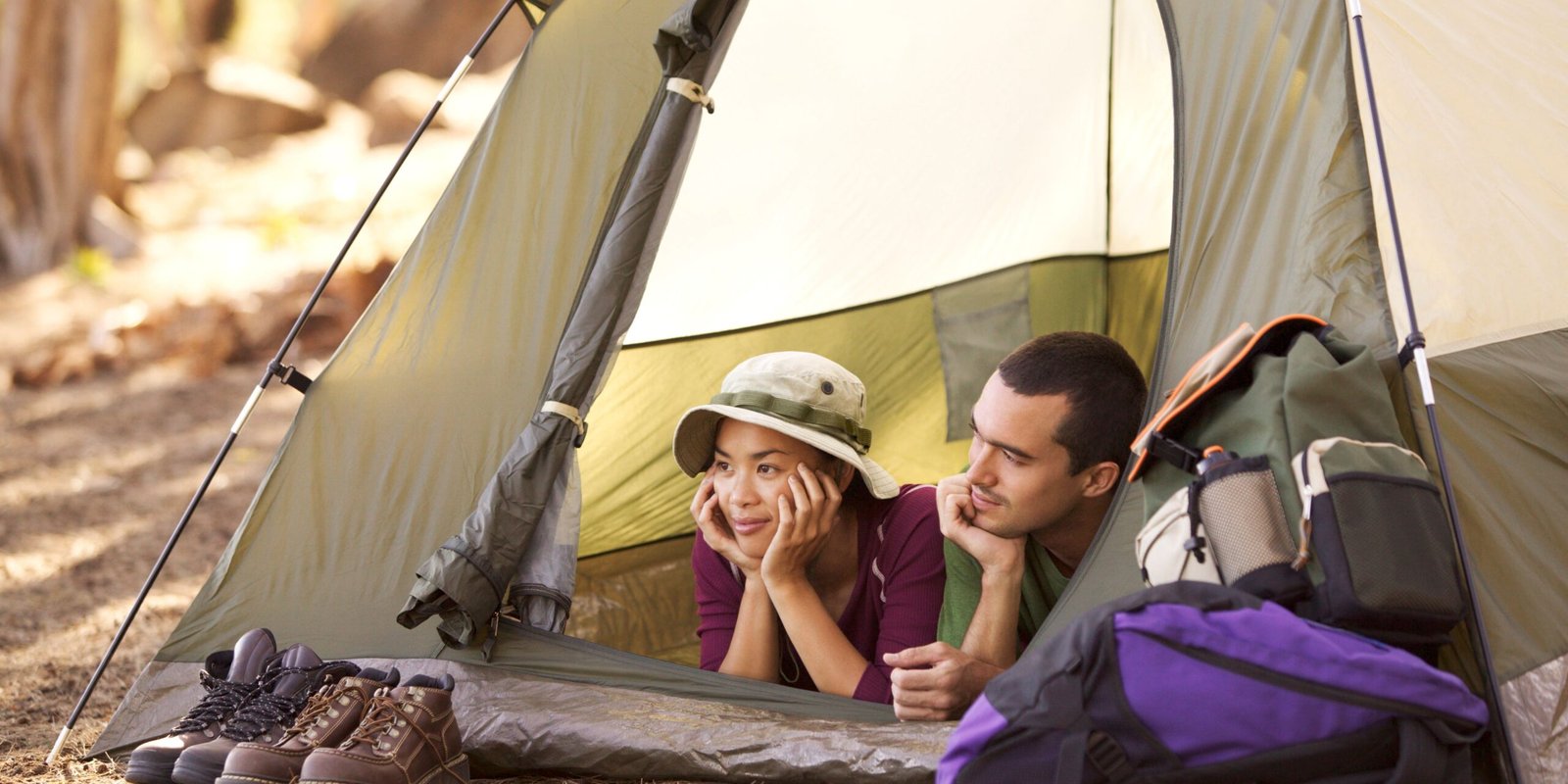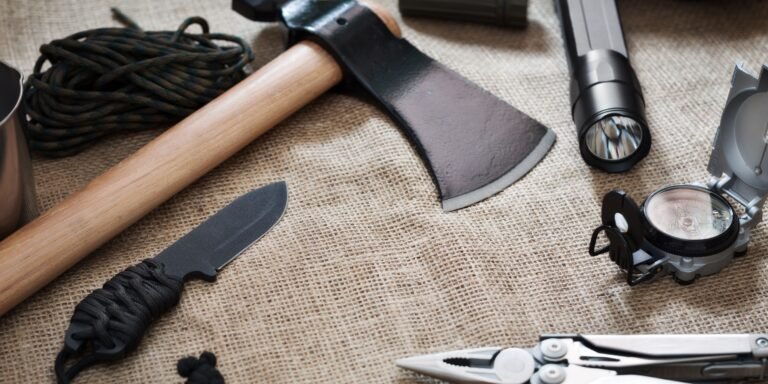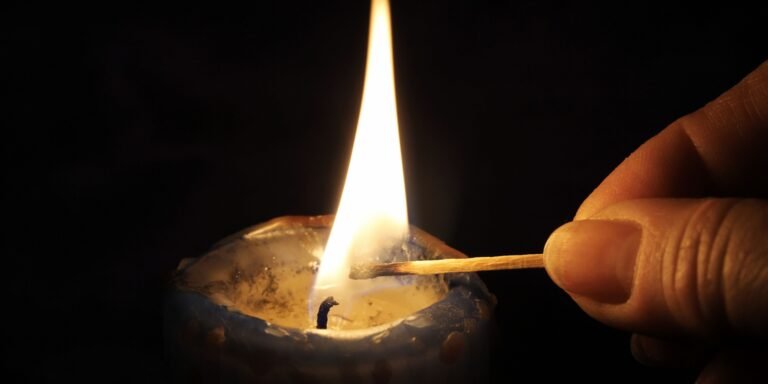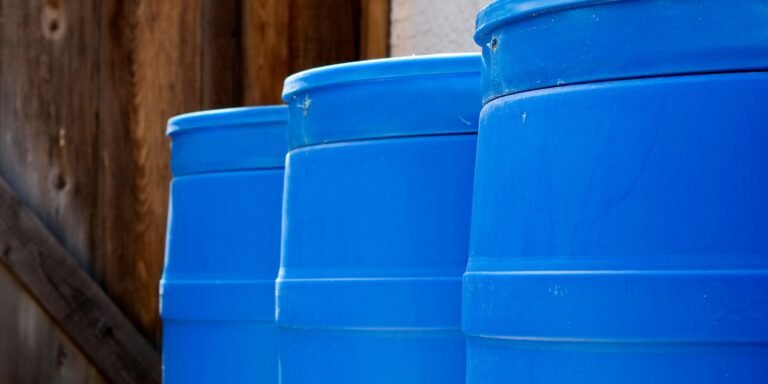How To Heat A Tent Safely In An Emergency Situation
This post may contain affiliate links, full disclosure here.
Heat is required for our bodies to function normally. The average body temperature is around 98.6 degrees Fahrenheit (37 oC). When exposed to moisture and cold weather, people tend to lose body heat more quickly. If too much heat is lost and the body temperature falls below 95 degrees Fahrenheit (35 degrees Celsius), a medical emergency known as hypothermia occurs, which can lead to death.
When camping in a cold environment, hypothermia can easily develop. Knowing how to warm a tent and keep it warm is critical for survival. The following are some safe ways to stay warm inside a tent:
- Body heat and high caloric diet
- Catalytic heater
- Electric heaters
- Disposable hand and foot warmer
- Hot water bottles/pack
- Hot rocks
- Hot air tent heater
See also: Top 20 Barter Items to Stockpile
How is Heat Transferred, Retained, and Lost
Heat is a type of energy that is transferred from one body to another based on the difference in temperature. The effect is usually a heat transfer from a hotter to a colder body. This causes the hot body’s temperature to drop and the cold body’s temperature to rise until an equilibrium is reached.
Conduction, convection, and radiation are the three basic heat transfer mechanisms.
Conduction
The transfer of heat through a solid material is referred to as conduction. Two objects must be in contact with each other for heat transfer to occur. This mechanism is best illustrated by a chocolate bar that melts when held. Another example is holding a cup of hot coffee in your cold hands.
Convection
The transfer of heat through a liquid or gas is known as convection. When a liquid or gas is heated, it loses density and rises, much like a hot air balloon. Cold air does the opposite, which is why it sinks and the coldest part of a freezer is at the bottom. Any opening or hole in the roof of a tent will easily allow warm air to escape.
Radiation
Radiation, also known as thermal radiation, is the direct transfer of heat (energy) via electromagnetic waves to a heat-absorbing body. There are various electromagnetic wave spectrums, all of which can transfer heat. Anything with a temperature emits energy (heat), albeit to varying degrees. In general, thermal heat is mostly transferred via infrared waves.
The sun’s heating of the earth is an excellent example of thermal radiation in action. There is no solid contact between the sun and the earth, nor is there any liquid or gas. The heat emitted by the burning sun is transmitted via various electromagnetic waves, the majority of which are infrared.
Heat Loss and Heat Retention
As previously stated, heat moves from a warmer to a colder body via various heat transfer methods. A warm tent loses heat when camping due to the combination of the three.
When the tent is set up over a cold surface, it loses heat through conduction. It loses heat through convection when cold air from the outside hits the walls or there is an opening for warm air to escape. Finally, because all objects with a temperature emit radiation, it loses some heat this way as well.
Preppers and survivalists can address each of the mechanisms responsible for heat transfer by understanding them. Heat conduction can be slowed by using non-conductive materials as a barrier. Heat loss due to convection can be reduced by erecting the tent under cover of trees and patching any large tent openings. Finally, using reflective materials can slow or even prevent heat loss through thermal radiation.
All of the information above is critical, especially for preppers when SHTF and they have no choice but to camp outside.
Precautions When Heating a Tent
Carbon Monoxide Poisoning
Starting a fire inside a tent is dangerous and should never be attempted. Carbon monoxide is a gas produced by incomplete combustion of a fuel source when there is insufficient oxygen to burn it. When a fire is lit inside a tent, the oxygen is quickly consumed due to the poor ventilation and small space. As a result, carbon monoxide can easily accumulate and cause harm.
Carbon monoxide has no odour or colour, making it extremely easy to be exposed to without noticing any effects. At high enough concentrations (1,200 ppm), it rapidly displaces the oxygen in the blood, causing toxicity and suffocation at the cellular level, eventually leading to death.
Carbon Monoxide Poisoning Symptoms
Similar to intoxication, impaired mental status
Dizziness
Physical coordination loss
Breathlessness
Tachycardia (heart rate greater than 100 beats per minute)
Chest pain
Seizures
Consciousness loss
If these symptoms are present, and there is a strong suspicion of carbon monoxide accumulation, everyone should immediately seek an open area. If this occurs in a tent, leave the tent and keep the door open to allow the carbon monoxide to escape.
Anything that can cause a fire should never be used inside a tent. Many people believe that candles do not emit enough carbon monoxide; this is completely false. Candles continue to deplete the oxygen in the air, particularly when used in large quantities to heat a tent.
Carbon Monoxide Detector
Even if a heat source is considered safe and does not emit carbon monoxide, preppers should bring a carbon monoxide detector. These gadgets are small, compact, and light. It adds an extra layer of security in the event that a heat source fails.
Fire
Some methods of heating a tent may inadvertently start a fire in its surroundings. Anything that can start a fire should not be left unattended inside a tent as a general precaution. When using an electric heater with heating coils, make sure it is completely secure and will not tip over. Because the majority of the contents in a tent are flammable, the heating element can still start a fire.
Safe Ways to Stay Warm In Your Tent
Body Temperature and a High-Calorie Diet
As long as there are calories to burn, our bodies can produce heat indefinitely. Eating a high-calorie diet before sleeping, combined with heat-retaining methods, is often enough to keep a tent warm. In the winter, the body’s caloric requirement rises to 3600 to 6000 calories per day, depending on activity level.
Carbohydrates, fats, and proteins are the three macromolecules that provide calories.
- Carbohydrates account for 50-60% of total caloric intake. Simple carbohydrates, such as sugary foods and starches, are easily metabolised and provide an energy boost (heat). Complex carbohydrates, such as pasta and whole grains, take longer to digest and release energy.
- Fats – typically account for 25-30% of total caloric intake. These require more time to metabolise and provide long-term energy. When compared to carbohydrates, it emits twice as many calories per pound. When sleeping outside, preppers should always have some fatty food on hand.
- Protein accounts for 20% of total caloric intake. These are also complex molecules that are slowly metabolised.
When combined with heat retention methods, this is the best and safest way to stay warm. As long as there is an adequate food supply, there are no drawbacks.
Even if our body is like a combustion engine, if it becomes too cold too quickly, the chemical processes that aid metabolism slow down. This is why it is still necessary to employ methods of retaining heat and protecting oneself from the cold.
Catalytic Heater
Catalytic heaters generate heat by combining fuel, a catalyst, and oxygen. The fuel source for this heater is either propane or butane. Platinum or platinum-coated metals, as well as platinum-like metals such as rhodium and palladium, are commonly used in catalysts.
Normally, fuel and oxygen react to produce a small amount of heat. The addition of a catalyst to the equation accelerates the reaction and generates a large amount of heat as a byproduct. The catalyst is not consumed during the reaction, and the reaction will only stop if there is no more fuel or oxygen available.
Because there is no flame produced by the reaction, there is no risk of carbon monoxide accumulation. It does, however, consume oxygen and can deplete the oxygen supply within a tent. In addition, as a byproduct of the chemical reaction, a small amount of carbon dioxide and water are produced.
Regardless, modern camping catalytic heaters are built with multiple fail-safe systems. The majority of models include an oxygen depletion sensor (ODS), which automatically turns off the heater when the oxygen level falls to dangerously low levels. Some models also include a built-in pressure sensor to prevent gas leakage and a tip-over safety feature that turns off the heater if it is tipped over.
These extra features make this type of heater more suitable for heating a tent. There is still a slight possibility of a malfunction, which is why this device should never be left unattended.
Electric Heaters
Electric heaters are yet another appealing option for heating a tent. It operates by directing an electric current through heating elements that are electrical resistors. The electric current is converted into heat by these resistors. As a result, there is no combustion and no carbon monoxide is produced.
When using electric heaters, there is still some risk. First, it can become hot enough to melt objects around it, and second, it can tip over and start a fire. It is preferable to select an electric heater with a tip-over safety feature. It should be placed properly on a stable surface, away from objects that can melt or easily catch fire.
Its main disadvantage is that it requires electricity to function. To use this type of heater outside, a generator is required. Furthermore, it consumes a significant amount of electricity. There are battery-powered electric heaters on the market, but they do not produce enough heat and quickly run out of power.
Disposable Hand and Foot Warmer
Hand and foot warmers work in the same way that a catalytic heater does. To generate heat, both use chemical reactions and catalysts. Iron powder, activated charcoal, vermiculite, and table salt are all included in a hand warmer pouch. When the packet is exposed to air and moisture, it generates heat through the formation of rust.
The activated charcoal and vermiculite, which hold the necessary moisture for the reaction, aid in this chemical reaction. The catalyst in this mixture is table salt, which speeds up the reaction and allows enough heat to be produced. In addition to retaining moisture, the vermiculite and activated charcoal diffuse the iron powder, preventing it from producing too much heat and accidentally burning the skin.
Depending on the brand, these can last anywhere from 7 to 24 hours. It will not be able to heat an entire tent by itself. It is, however, a safe and easy way to stay warm when combined with good mittens, socks, or a great sleeping bag.
Hot Water Bottles
Thermal mass is a material’s ability to absorb and retain heat. Because water has three times the thermal mass of concrete, it is an efficient and safe way to heat a tent. Its heat retention capacity is proportional to its volume. The greater the volume of heated water, the longer it can remain warm.
Regular water bottles are not recommended because the water must be heated near boiling or up to boiling. Instead, rubber or thermoplastic water bottles should be used. Fill these with hot water and place them around the tent or inside the sleeping bag to use.
To avoid accidental spillage, hot water bottles should always have their lids tightly closed. The bottles are sufficiently hot to cause injury. Wrapping the bottles in cloth before sleeping reduces the risk of burns from prolonged contact.
Hot Rocks
Rocks, like water, have the ability to absorb and store heat. Rocks are also plentiful, so finding one should not be a problem.
Place rocks 5 to 10 inches away from a heat source or a campfire to heat them. These should be rotated on a regular basis to ensure even heating on all sides. This ensures that the core is heated as well.
When the rocks become too hot to handle with bare hands, they are ready to be used to heat the tent. Heating rocks in this manner usually takes 1 to 2 hours, depending on the size of the fire source. Wrap them in a cloth and place them around the tent or in the sleeping bag to keep it warm.
It is not recommended to heat rocks directly over a fire. When used, it can overheat the rock, resulting in serious injuries. It will also char the rocks, causing them to stain clothing and other materials. If used incorrectly, hot water bottles, like hot water bottles, pose a risk of burning through skin contact.
Hot Air Tent Heater
It is relatively safe to start a fire outside and use it to heat the tent inside. A propane-powered burner in a hot air tent heater heats pipes or a non-galvanized steel box. Two air ducts are located at the opposite ends of these pipes or boxes. The one end is used to actively draw in air with a fan, while the other end vents hot air into the tent.
It works by heating the air that has been drawn into the pipes/box and forcing it into the tent. Because the air vented comes from outside, there is no risk of carbon monoxide buildup. Furthermore, because the fire source is also outside, there is no risk of carbon monoxide poisoning in an oxygen-rich environment.
This setup, however, is extremely bulky and requires a car battery to power the fan. To use this method, one would need to bring butane canisters or a propane tank. Despite these disadvantages, it remains one of the best ways to safely heat a tent.
DIY Hot Tent Heater
In theory, a DIY hot tent heater can be constructed with wood as the fuel source. This necessitates a minor change in the design of the hot air tent heater’s steel box. Air ducts connected to the steel box must be positioned differently if a smaller steel box is used. The intake duct should be connected to the lower edge of the steel box’s side, while the output duct should be connected to the top side of the box.
Due to the property of air to rise when heated, this ensures that the hot air always vents out through the output duct. As hot air is vented into the tent, cold air is drawn in through the other duct and into the steel box. The air will become more contaminated.
By placing the steel box on top of a campfire, you can heat it. To increase safety, a longer insulated air duct can be used to move the campfire away from the tent. Because the fire is burning outside, there is almost no risk of carbon monoxide buildup.
There are other ways to accomplish this setup, including using a bent metal pipe and a raised Swedish log torch. The metal pipe is bent at a 90-degree angle and placed inside the log torch, with the other end pointing into the tent. The pipe that goes into the log torch should be inserted further down until its end is exposed to open space. This ensures that the air being sucked is clean and free of smoke.
However, there is a danger of sucking in soot from the torch. A shorter pipe that angles horizontally and extends further from the centre of the log torch could be attached as a solution.
Heat Retention
Aside from heating the tent, it is also critical to ensure that the heat does not quickly dissipate. The following factors influence heat loss and retention:
Size and quality of tent
Location of the tent
Insulation for tent flooring
Insulation for tents
Proper attire
Bag for sleeping
Blanket made of mylar
Tent: Size and Quality
Larger spaces are more difficult to heat and keep warm. This is why the tent should be selected based on the number of people who will sleep in it. Aside from that, the tent’s quality is critical. A 4-season tent or a winter tent specifically designed to retain heat and resist high winds is the best tent to use.
Location of the Tent
The location in which a tent is set up is also critical. Wind is more prevalent on ridges and in open areas. This can cause the tent to cool faster due to convection. As a result, whenever possible, it is preferable to set up camp under trees or other structures that provide cover.
Always look up before pitching a tent under a tree and check for potential hazards that may fall. This includes a broken or rotten branch, as well as a beehive or wasps’ nest.
Insulation for Tent Flooring
The area where the tent will be set up should be insulated. The bare ground is frequently cold, and heat transfer via conduction makes it more difficult to retain heat. Dry leaves and pine needles can be gathered and spread out to create improvised insulation. Sleeping pads can also be used as an additional ground insulator inside the tent.
Tent Insulation
When the only tent available is not rated for cold temperatures, the tent itself can be insulated. The idea is to create a barrier between the tent wall and the inside air, or between the tent wall and the outside air.
To insulate the inside, use adhesives to adhere a soft, flexible insulator such as thermal fabric or reflective air bubble insulation to the tent walls and roof. However, when you’re constantly on the go, this can be time-consuming.
Parts of the tent can be insulated on the outside by covering them with waterproof thermal fabric or a tarp. Take care not to cover the entire tent with these two materials, as they are not breathable and can lead to oxygen deprivation.
Sleeping Bag
Choosing the right type of sleeping bag can help you retain more heat. Temperature rating, design, and insulation type are all important considerations.
Temperature Rating
Summer (+30 oF or higher), 3-season (15-30 oF), and winter (+15 oF and lower) sleeping bags are all temperature rated. These ratings are based on the average person, so when selecting a sleeping bag based on this rating, one must consider their weight and metabolic rate.
Design
Sleeping bags are available in four different styles:
- Rectangular – open and airy. Not the best for keeping the cold at bay.
- Semi-rectangular – slightly better at retaining heat while still providing some space.
- Mummy – fits snugly and provides the best heat retention.
- Double Bag – This bag is designed for two people who want to sleep in the same sleeping bag. It enables people to share their body heat, which results in improved heat retention.
- These also have extra features like hoods and shells that increase insulation. Some models even have extra zippers for better temperature control and sweat prevention.
Type of Insulation
There are two types of insulation materials: synthetic and down.
Synthetic – less expensive, insulates even when damp, is hypoallergenic, and dries quickly.
Down – performs well in cold, dry weather, compresses easily, and is long-lasting.
Blanket made of Mylar
A space blanket, also known as a mylar blanket, is a thin, light, and low-bulk blanket made of heat-reflective plastic. This blanket reduces heat loss from a person that would otherwise occur due to thermal radiation, convection, and evaporation.
The blanket can be used both inside the tent and on top of a sleeping bag as additional insulation. It is critical to leave some space between the body and the blanket when using it to keep warm in the tent. When used too close to the body, conductive heat loss occurs.
Appropriate Clothing
These are the most important ways to keep warm and retain heat. It is critical to have insulation between the body and the cold environment in order to stay warm.
Layers
Wearing layers of clothing is an effective way to protect the body from the elements. In general, you should wear four layers of clothing:
To keep the skin dry, long underwear, also known as long johns, should be made of a non-absorbent material. It should also be comfortable against the skin.
Mid-layers – this layer will wick sweat away from the skin and the long john, allowing it to evaporate into the environment.
Insulation layer – For better insulation against the environment, use thick clothing for this layer.
The outer layer is the most important of the layers. This will directly protect the wearer from the cold wind and environment.
Avoid Sweating
Sweating causes moisture to accumulate on clothes, reducing their insulation value. The small amount of moisture also aids in heat loss via evaporation and convection. That is also why it is critical to select the proper pair of socks and mittens.
Avoid Cotton
Cotton clothing should not be worn in extreme cold. Cotton absorbs and retains moisture, causing it to lose its insulation value quickly. It is preferable to wear socks and mittens made of wool, fleece, or similar synthetic materials.
Wool, fleece, and other man-made fibres
Even when wet, these materials retain their insulating properties. Most of these socks and mittens are also thicker, allowing them to absorb more moisture and wick it away from the skin. These materials should also be used to make long johns, winter hats, earmuffs, and scarves.
How To Heat A Tent Safely Bottom Line
Finally, staying warm can be accomplished through various combinations of methods. A heat source is necessary to raise the temperature initially, but insulators are also required to retain and maintain warmth.







